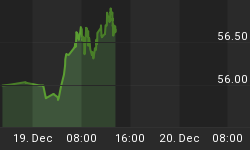Once geared towards affluent consumers in developed markets, the video games industry has grown rapidly in emerging economies in recent years, thanks to three principal factors: the proliferation of smart phones; the greater availability of high-speed internet; and, more broadly, the maturation of the industry at a global level.
Parallel to this, games are increasingly being produced within emerging markets as costs decrease, development software becomes more accessible and local talent is nurtured.
One high-potential segment in the global industry is eSports, dedicated to competitive video game playing. It is anticipated that global eSports revenues will be in excess of $1bn this year, with China being the leading market.
Cloud gaming is another online technology that is set to boost the market, enabling users to stream high-end games on handheld devices.
Mobile games drive expansion
Globally, Covid-19 has accelerated an increase in consumer engagement with mobile games.
According to figures from Newzoo, the mobile games market will generate revenues of $77.2bn in 2020, representing year-on-year (y-o-y) growth of 13.3%. At the same time, the total of global smartphone users will grow to 3.5bn.
In terms of production, mobile games are relatively less affected by Covid-19 containment measures, as the development process for individual applications is simpler than for more complex platforms, and hence less prone to disruption.
Much growth in mobile gaming is coming from ‘mobile-first’ emerging markets.
This is partly attributable to the low barrier to entry in this segment, as there is no need to invest in equipment such as a gaming console, and many games use a free-to-play monetisation model.
Additionally, some consumers in emerging markets can only access a computer at internet cafes, which in many countries have been closed due to lockdown measures. Mobile gaming is therefore the one way in which large sections of the population can currently play online.
Going forward, increased 5G penetration will further drive uptake of game streaming services, with telecom companies in emerging markets such as Thailand and Oman pushing ahead or even accelerating 5G rollout plans in the wake of the pandemic.
It remains to be seen, however, how easy it will be to convert free players into paying consumers.
In the short term at least, it seems likely that engagement will grow faster than revenue, but monetisation levels generally increase as markets mature, even while installation rates drop off.
Strategic interventions
Latin America and South-east Asia are currently the two fastest-growing regional markets for online games.
The South-east Asian games market generated revenues of more than $4.3bn last year, representing y-o-y growth of 13.9%.
As in other parts of the world, this growth is being spearheaded by mobile games, which accounted for 69.4% of the region’s overall gaming revenues, or $2.6bn.
Individual South-east Asian countries constitute significant national markets. For example, the Philippines’ 43m gamers spent $572m on games in 2019.
In recent years, stakeholders in the Philippines' vital business process outsourcing sector have been looking to nurture video games and animation among other creative industries that offer the potential to generate high-value jobs and exports. To this end, French video game company Ubisoft opened the first AAA video game development studio in the country in 2016.
Elsewhere, $1.1bn was spent on games in Indonesia in 2018. According to the Indonesian Gaming Association, the domestic gaming market grows at an average annual rate of 37%. Various government initiatives – including the recently established eSports President’s Cup – are aimed at enhancing that figure. Related: The Bitcoin Miner That Is Paid To Do Nothing
Meanwhile, telecommunications major Telkom Indonesia, of which the government is the majority shareholder, recently launched the Indigo Game Startup Incubation initiative, a bootcamp aimed at supporting local talent.
In Latin America, the principal games markets are Mexico, Brazil and Argentina. Mexico is leading the way, with sales of $1.8bn last year. Mobile is the most popular platform, but the region is also seeing growth in PC and console gaming.
In terms of game development, recent years have seen numerous success stories, including Mundo Gaturro, developed in Argentina, and Uruguay’s Kingdom Rush.
Nevertheless, a significant skills gap still exists. Mexico has made efforts to expand the talent base, with the government launching the national Videojuegos MX contest in 2015.
Alongside this, 2017 saw the establishment of the Mexican Association of Video Games, a national body tasked with driving the development of the video gaming industry.
These examples underline the huge potential of online video gaming in emerging markets, as well as how its growth can be influenced by national policy measures aimed at improving the ecosystem.
More Top Reads From Safehaven.com:
















